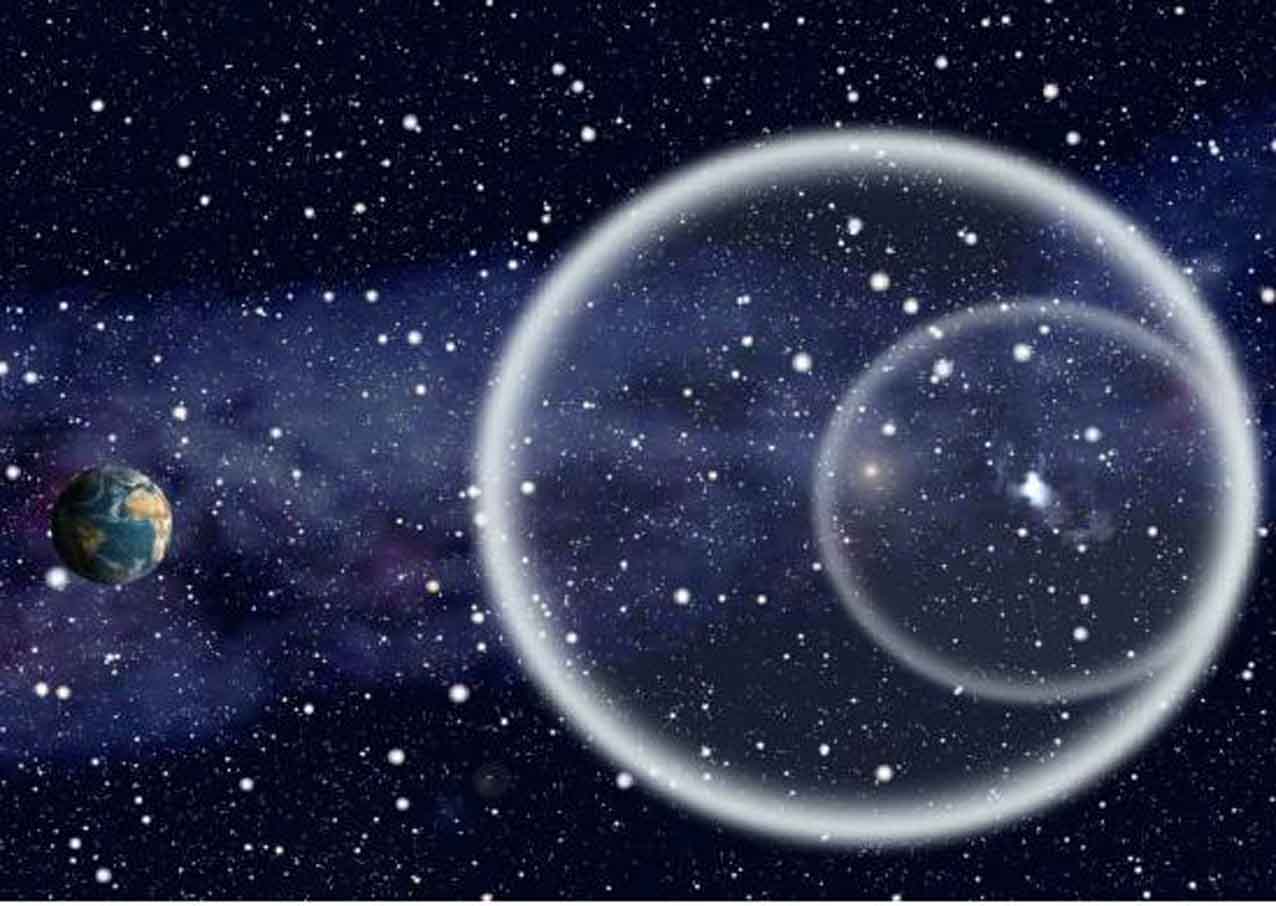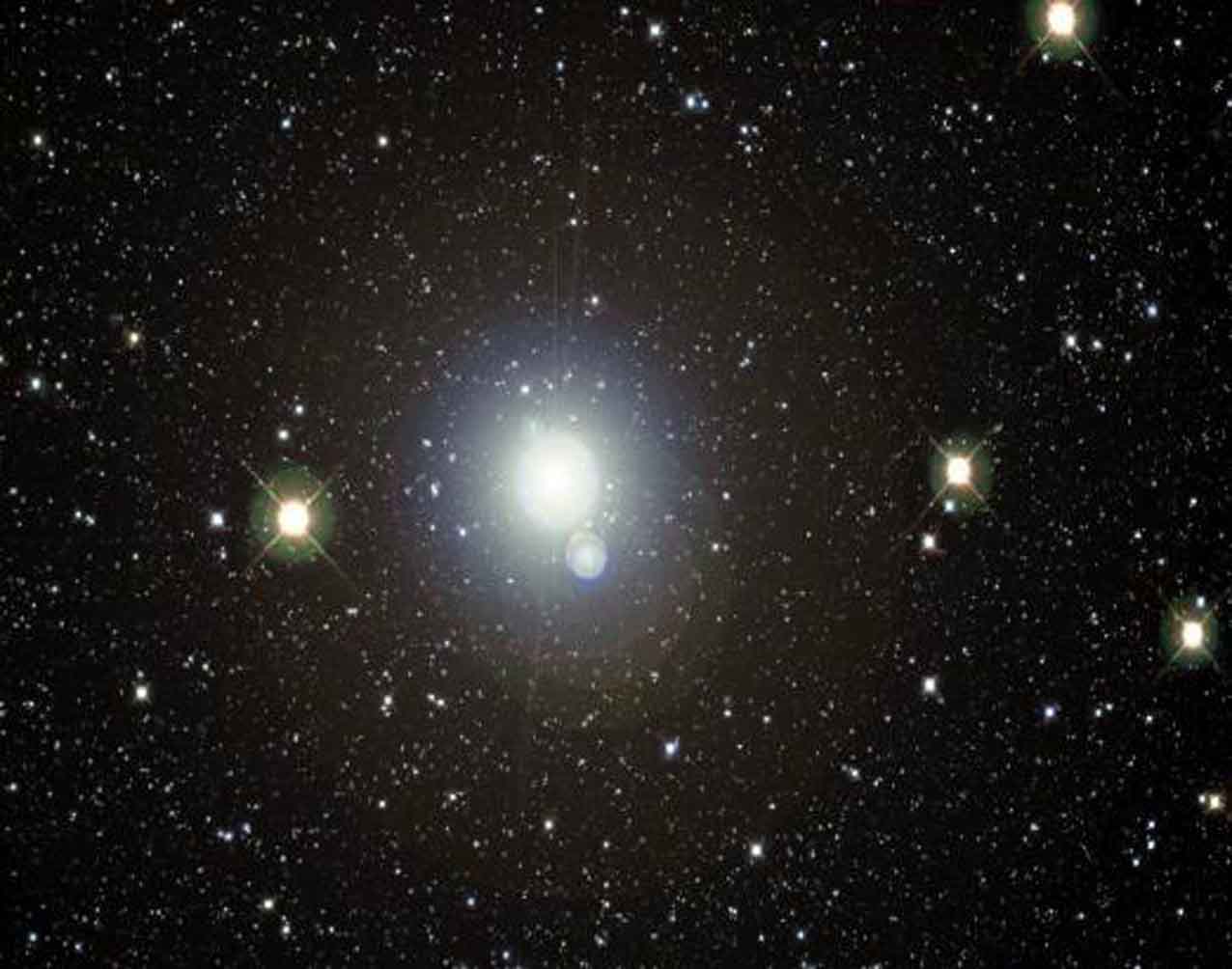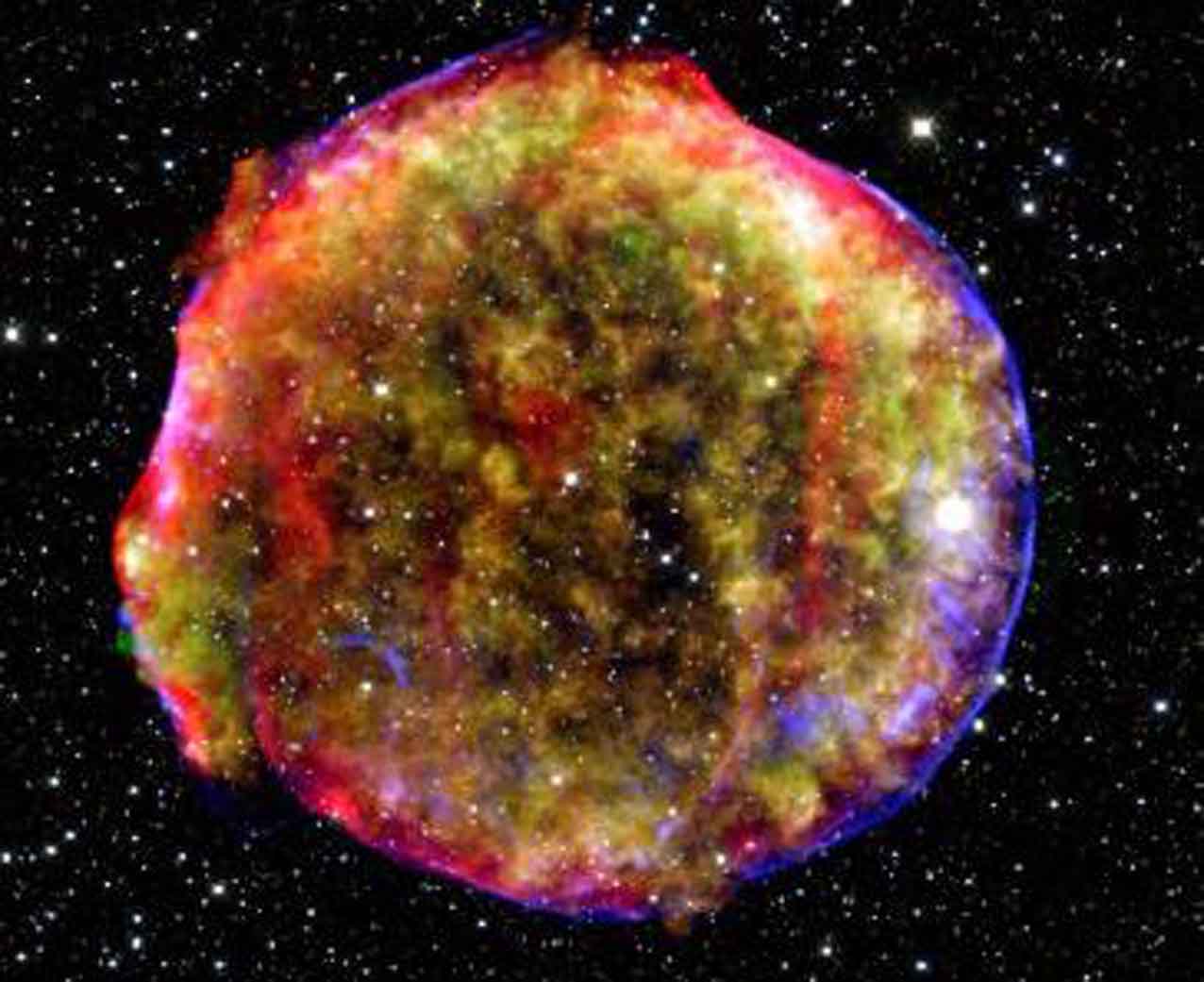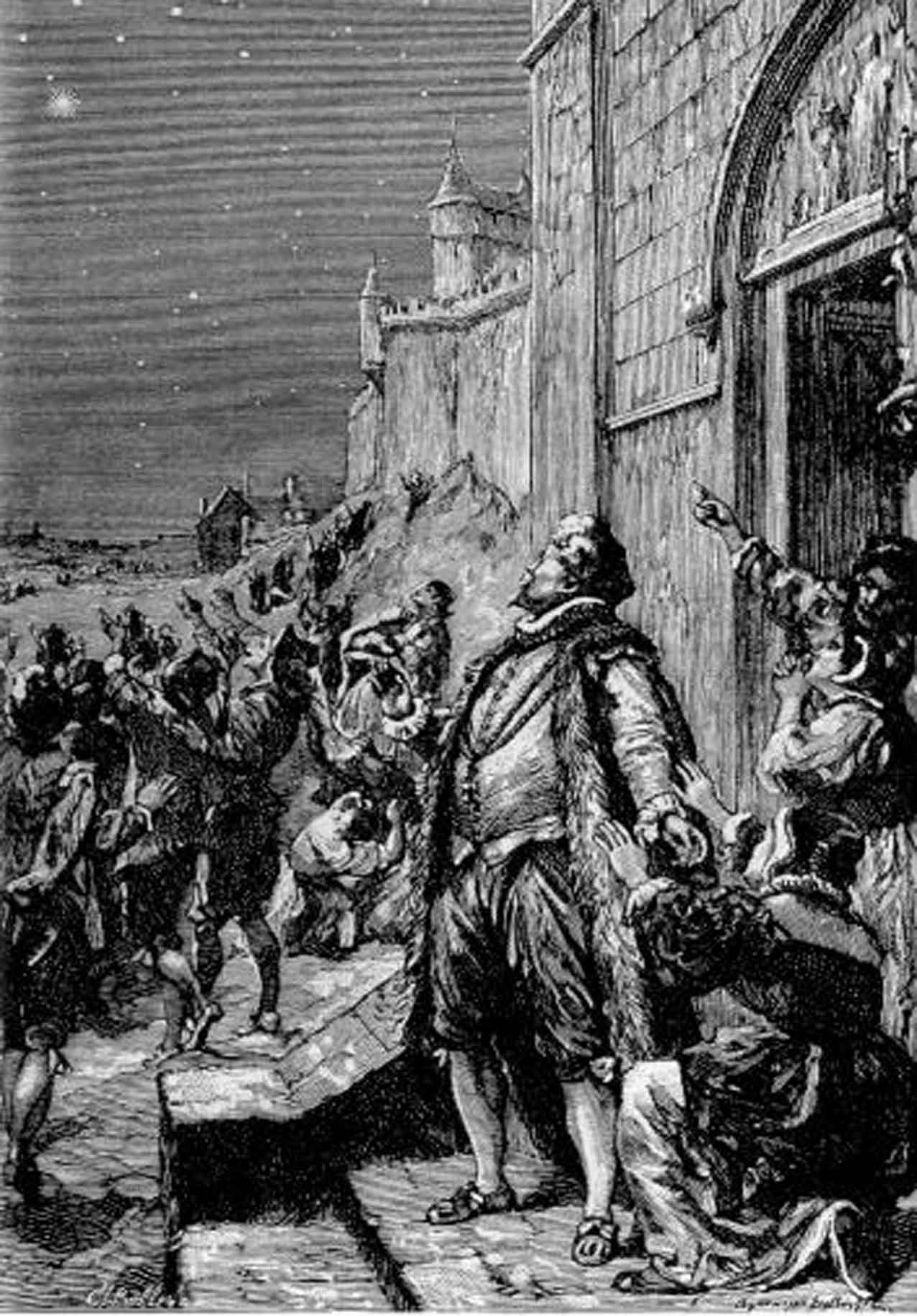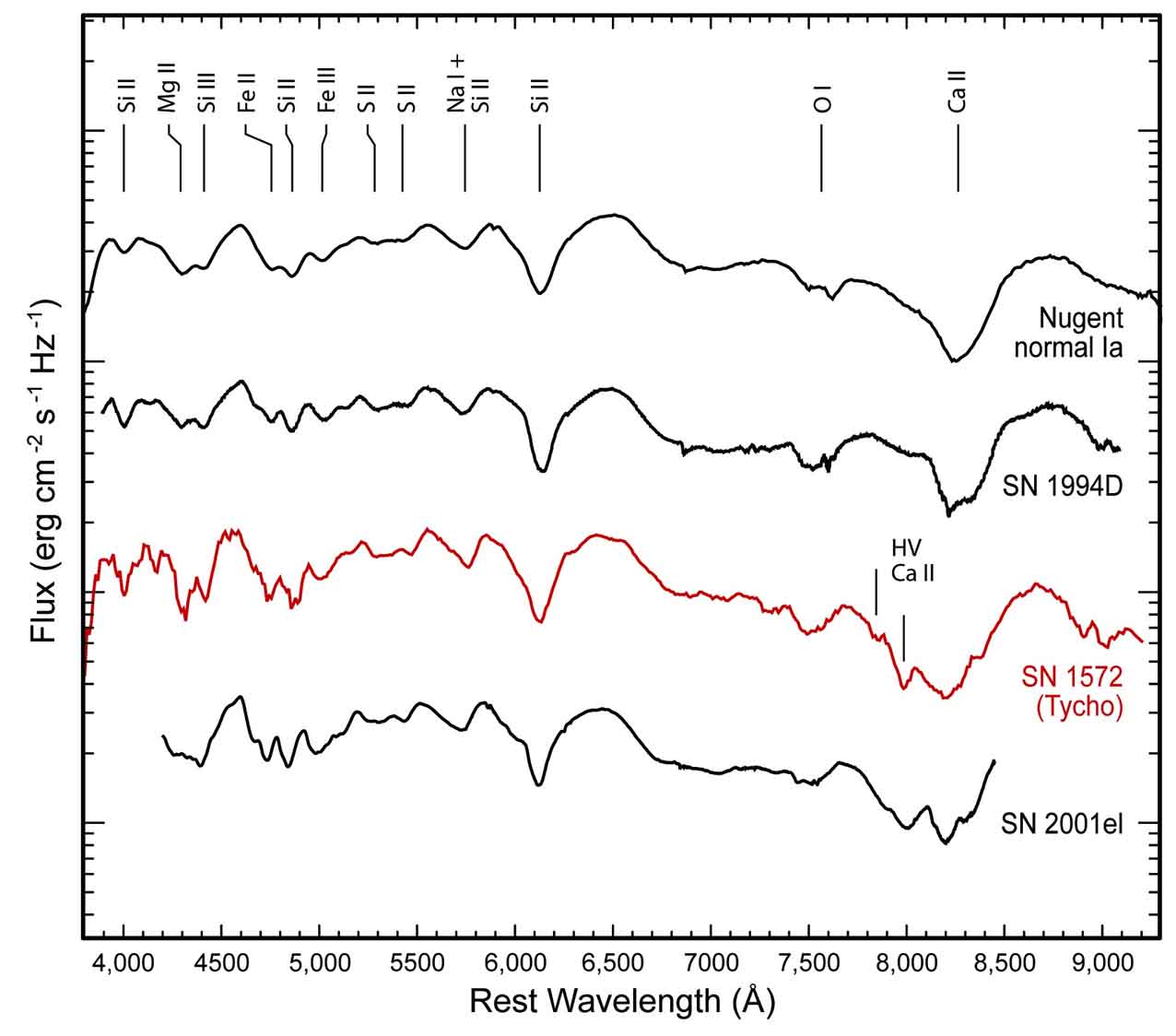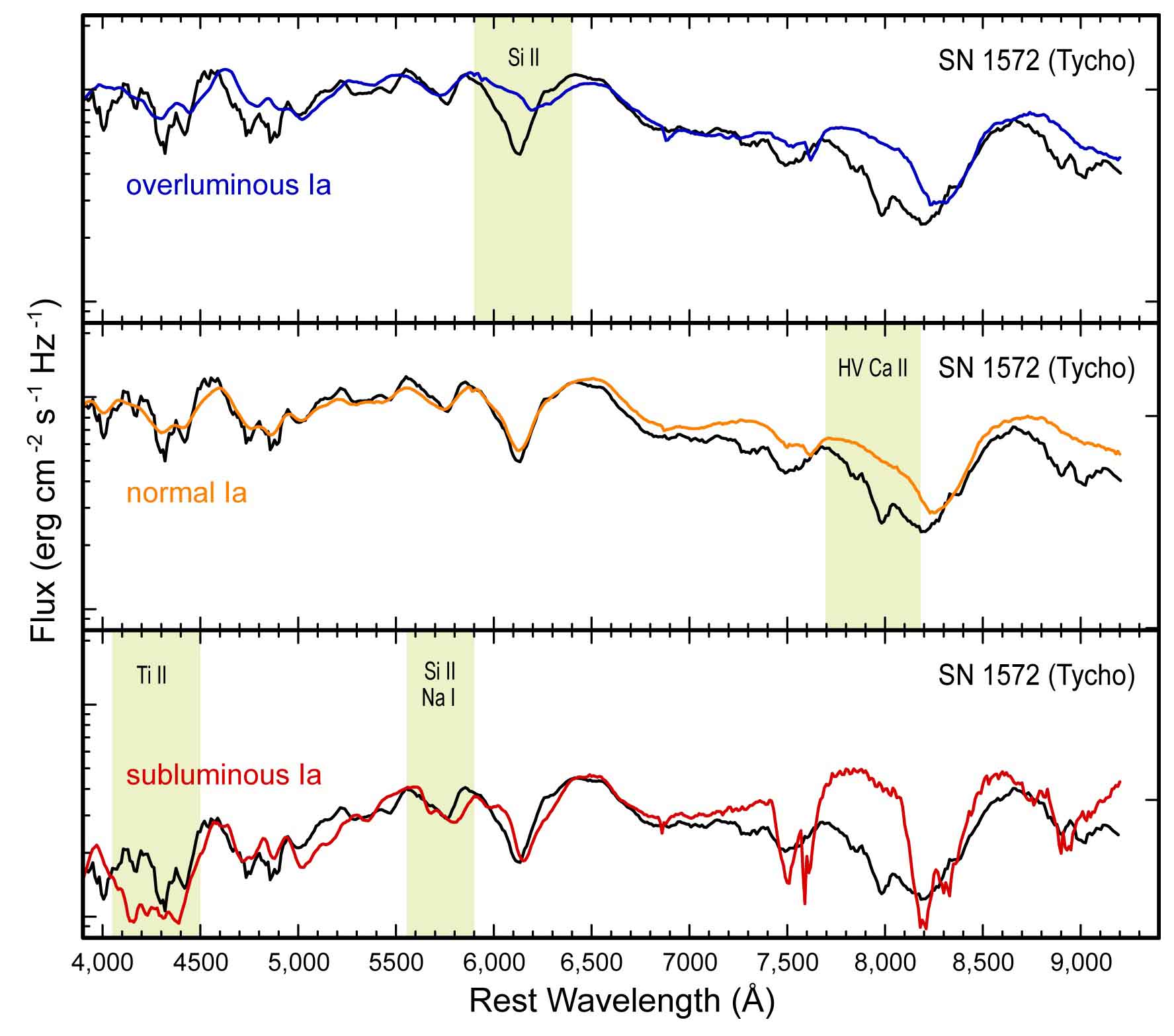| Press Release 08-12-03 | Press Releases 2008 |
A Blast from the Past
Astronomers Resurrect 16th Century Supernova
Astronomers have used light echoes as a time machine to unearth secrets of one of the most influential events in the history of astronomy – a stellar explosion witnessed on Earth more than 400 years ago. By using a Galactic cloud as interstellar "mirror" an international team led by Oliver Krause of the Max Planck Institute for Astronomy in Germany has now re-analysed the same light seen on Earth in the 16th century and have, for the first time, determined the exact type of the explosion that happened. Calar Alto Observatory has contributed to this discovery and these results were published in the scientific journal Nature, 4th December 2008 issue.
A brilliant new star appeared on the sky in early November 1572. The new star outshined all other stars in brightness and was even visible during daylight. It was widely observed by astronomers all around the world and it helped to change our understanding of the Universe forever. Precise measurements of the star position by theDanish astronomer Tycho Brahe, revealed that the star was located far beyond the Moon. This was inconsistent with the Aristotelian tradition that had dominated western thinking for nearly 2000 years. The supernova of 1572 was a cornerstone in the history of science and is today known as Tycho's supernova
An international research team has now used light echoes from the ancient supernova outburst to precisely classify the supernova witnessed by Tycho Brahe and others more than 430 years in the past. Although the direct photons from Tycho’s supernova went past Earth in 1572, they spread out through space in a constantly expanding sphere. When the light hits a cloud of dust and gas off to the side (in the sky) of the supernova, some photons are reflected towards Earth, and they reach us years later. Think of dropping a rock into a still pond – the waves go outwards uniformly until they hit (say) a pier; new waves are generated, which also travel outwards. An observer on the far shore of the pond would first see the direct waves from the rock, and some time later the reflected waves from the pier. By using such a galactic cloud as interstellar "mirror", Dr Krause's team could re-observe the same light witnessed on Earth in the 16th century – shortly before the invention of the telescope – with the powerful scientific tools of the 21st century available at modern observatories such as Calar Alto and Subaru.
The spectroscopic analysis of the light echo showed the signatures of the atoms present when the supernova exploded. The resulting spectrum of light revealed silicon but no hydrogen, telltale signs that Tycho's supernova resulted from a type Ia explosion of a white dwarf star. All supernovae of type Ia show practically the same intrinsic luminosity and, for this reason, they are used as cosmological probes to measure the large distances among the galaxies in the vastness of the Universe. The observation of type Ia supernovae in other galaxies has led to the discovery of the accelerated expansion of the Universe, what suggests the existence of the mysterious dark energy that puzzles astronomers and challenges fundamental physics since more than a decade.
Despite their importance, many details of type Ia supernovae remain to be fully understood. All recent type Ia supernovae have occurred in external galaxies. To describe the physics of these events in the greatest detail, it would be ideal if we could observe one of them in our own Galaxy: this is what has been done now in the study performed by Krause's team. The results not only qualify Tycho's supernova as a normal type Ia in the backyard of our own Galaxy, but also provide a wealth of new information which can be now compared in great detail to observations of both the explosion and the remnant at the same time.
The results of these studies have been published in the scientific journal Nature, 4th December 2008 issue. The article is authored by Oliver Krause (Max-Planck-Institut für Astronomie, Max Planck Institut for Astronomy, Germany), with the following co-authors: Masaomi Tanaka (University of Tokyo, Japan), Tomonori Usuda (National Astronomical Observatory of Japan), Takashi Hattori (same institution), Miwa Goto (Max-Planck-Institut für Astronomy, Max Planck Institut for Astronomy, Germany), Stephan Birkmann (same institution and European Space Agency), and Ken'ichi Nomoto ( University of Tokyo, Japan).
Light echoes from Tycho Brahe's 1572 supernova
Animation showing the evolution of the light echoes from the supernova explosion.
| Download explanation and animation 1 | |||
| File name | File type | Pixel | Size |
| Light_echo movie.pdf | explanation pdf | 622 KB | |
| light_echoes full.avi | Avi Movie, PAL D1 | 720 x 576 | 14 MB |
| light_echoes small.avi | Avi Movie | 360 x 288 | 3.9 MB |
| light_echoes broadcast.mov | Quick Time Movie (broadcast, PAL D1) | 720 x 576 | 551 MB |
| light_echoes medium.mov | Quick Time Movie | 360 x 288 | 46 MB |
Birth of the Tycho Supernova remnant
Animation showing the evolution of the supernova remnant over time until today's view.
| Download explanation and animation 2 | |||
| File name | File type | Pixel | Size |
| Birth_of_Tycho remnant.pdf | explanation pdf | 1.5 MB | |
| tycho_remnant small.avi | Avi Movie | 360 x 288 | 4 MB |
| tycho remnant.avi | Avi Movie PAL D1 | 720 x 576 | 18 MB |
| tycho_remnant hdtv.avi | Avi Movie (HDTV 16:9) | 1280 x 720 | 37 MB |
| tycho remnant.mov | Quick Time Movie (PAL D1) | 720 x 576 | 40 MB |
| tycho remnant broadcast.mov | Quick Time Movie (broadcast, PAL D1) | 720 x 576 | 180 MB |
Image of the Tycho Supernova remnant
Multi-wavelength image of Tycho's Supernova remnant in its present form.
| Download explanation and figure 1 | |||
| File name | File type | Pixel | Size |
| Tycho_remnant image.pdf | explanation pdf | 300 KB | |
| Tycho_remnant image_l.jpg | jpg | 943 x 945 | 232 KB |
| tycho remnant.jpg | jpg | 1930 x 1911 | 4.1 MB |
| tycho remnant.tif | 16 bit tif | 1930 x 1911 | 22 MB |
| tycho_remnant screen.jpg | jpg | 1024 x 768 | 235 KB |
Tycho Brahe witnesses the supernova of the year 1572
An engraving showing the observation of the supernova by Tycho Brahe in 1572.
| Download explanation and figure 2 | |||
| File name | File type | Pixel | Size |
| Tycho_observation_image.pdf | explanation pdf | 1.4 MB | |
| Tycho_observation_image_l.jpg | jpg | 1396 x 2054 | 1.1 MB |
Spectrum of Tycho's Supernova, comparison 1
Comparison of the newly obtained spectrum of Tycho's Supernova with other type Ia supernovae of different luminosities.
| Download explanation and figure 3 | |||
| File name | File type | Pixel | Size |
| Spectrum 1.jpg | jpg | 1148 x 1008 | 4.4 MB |
| Spectrum 1.ai | Adobe Illustrator | 1149 x 1014 | 3.3 MB |
| Spectrum 1.eps | 276 x 242 | 260 KB | |
Spectrum of Tycho's Supernova, comparison 2
Comparison of the newly obtained spectrum of Tycho's Supernova with different subgroups of type Ia.
| Download explanation and figure 4 | |||
| File name | File type | Pixel | Size |
| Spectrum 2.jpg | jpg | 1147 x 1008 | 4.41 MB |
| Spectrum 2.ai | Adobe Illustrator | 1146 x 1014 | 3.3 MB |
| Spectrum 2.eps | 275 x 242 | 260 KB | |
Institutes involved:
Max Planck Institute for Astronomy, Heidelberg
Institute for the Physics and Mathematics of the Universe, University of Tokyo
Subaru Telescope (Hawaii), National Astronomical Observatory of Japan, [NAOJ]
Further informations:
| Dr. Oliver Krause | Tel.: 06221 – 528 352 | |
| Dr. Jakob Staude | Tel.: 06221 – 528 229 |
Max Planck Institute for Astronomy
Königstuhl 17
69117 Heidelberg
Press releases 2008
